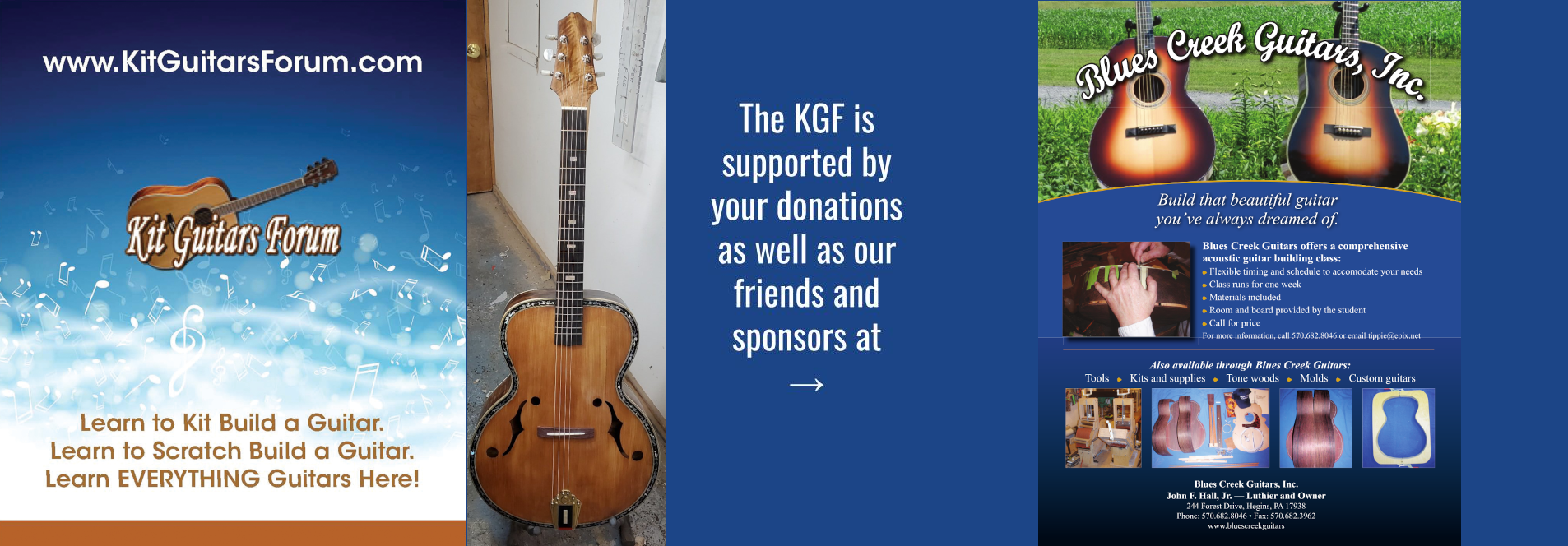Again, stupid because if I'd been smarter, I would have thought of this before.
On my latest build, using a solera (a sort of adjustable mold) instead of a conventional mold, I found out that I'd got the geometry off, so that if the neck were inserted into the neck block, there would be variance of about a degree from where it should be. This is the same thing that I noticed with the guitar I'd finished for Jim Abbiati, which I've chonicled here:
viewtopic.php?p=58253#p58253
On that guitar, the variance was so great that I decided not to try to "stretch" the guitar (adjust the neck angle by warping the ribs of the guitar) to rectify the distortion, and shimmed the neck instead. But on this one, the variance was so small that I figured that I'd try bending the body a little bit. The soundboard of the guitar had already been installed on the ribs, which is how I like to build guitars if they're going to have electronics installed... top first, and then the back. I had to decrease the neck angle, which meant increasing the distance between the neck and heel blocks on the back side. The trick is... how do you make a mechanism for "stretching" the body in such a way that you can remove the mechanism after the body is closed?
It eventually occurred to me that I already had the materials for this mechanism in the form of a 36" piece of 1/4" all-thread rod and a knob (a wing and washer would have worked just as well). Since it's a bolt-on neck, the top bolt hole was already used by the dummy neck I made so I could not only check the neck angle but have something to hold the guitar with when I sprayed on the finish. But the bottom hole, the one closest to the back, was just sitting there, begging to be used.
The attached picture shows how i did it. The all-thread is fed through the vacant hole, and the knob (or wing nut and washer) is threaded on. I chucked the all-thread into an electric drill to spin it (not really necessary, but two feet of all-thread is a lot of distance to spin a knob or wing nut on). As the all thread reached the heel block, I put a little caul there, and began to tighten the knob, gently stretching the ribs of the guitar into the fraction of an inch that it needed to put the dummy neck into perfect alignment with the soundboard of the guitar.
Then I glued the back onto the guitar. After the glue dried, locking the new geometry in place, it was easy to reach inside the soundhole, loosen the knob, and remove the all-thread the same way I installed it, all from the outside of the guitar.
In the picture, the blue tape is holding the volume control and end-pin jack in place, to be properly installed once the finish is on.
(Afterthought: If needed to "squueze" rather than stretch the body, I could have done that by putting a nut on one end of the all thread, feeding it through the vacant hole into the 1/2" hole I'd already drilled through the heel block for the audio plug, and then putting a wing nut and washer on the other end of the all-thread. Then I could tighten the wing nut until the desired geometry was achieved. That wouldn't have worked, obviously, if the 1/2" hole wasn't there, in which case would have had to use a long bar clamp or equal.)
Stupid Luthier trick #3
-
JLT
- Posts: 296
- Joined: Wed Nov 02, 2011 9:13 pm
- Location: Sacramento, CA USA
Stupid Luthier trick #3
You do not have the required permissions to view the files attached to this post.

